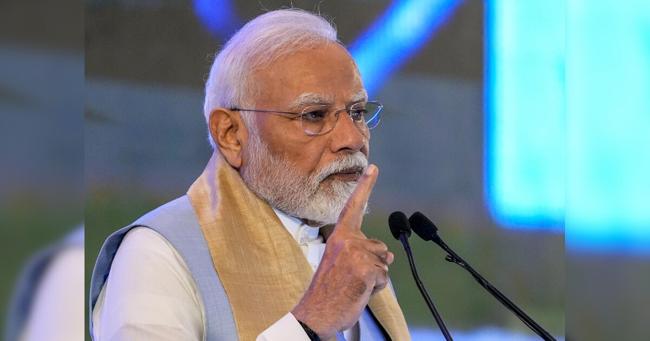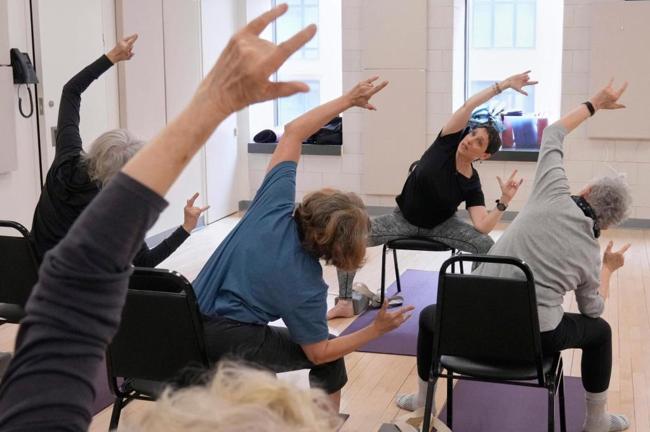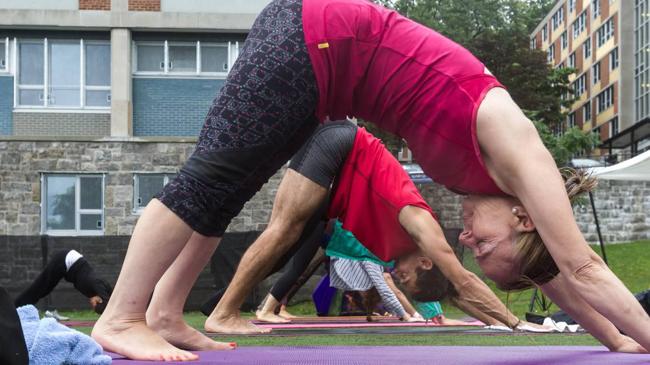Summary
Andhra Pradesh CM N Chandrababu Naidu thanked PM Narendra Modi for highlighting ‘Yoga Andhra 2025’ in his ‘Mann Ki Baat’ speech. The state will conduct month-long yoga sessions at 100 tourist sites, culminating in celebrations with the Prime Minister on June 21 in Visakhapatnam.
Source: Devdiscourse

AI News Q&A (Free Content)
Q1: What is the historical significance of Yoga in India and how has its practice evolved over time?
A1: Yoga originated in ancient India and was initially a spiritual and meditative practice aimed at achieving self-control and salvation. Historical texts such as the Rigveda and early Upanishads reference yoga-like activities, but systematic concepts of yoga emerged between the 5th and 6th centuries BCE. The Yoga Sutras of Patanjali, dating to the early centuries CE, became a foundational text. Over the centuries, yoga evolved to include Hatha yoga with a focus on physical postures (asanas). In the 20th century, figures like Swami Vivekananda and Krishnamacharya modernized yoga, introducing it to the West as a posture-based fitness and stress-relief practice. Today, yoga is practiced worldwide and has become an integral part of wellness routines.
Q2: How is Andhra Pradesh promoting 'Yoga Andhra 2025' and what are the main features of the initiative?
A2: 'Yoga Andhra 2025' is a state-wide initiative in Andhra Pradesh, India, aimed at promoting yoga practice among its citizens. The campaign includes month-long yoga sessions at 100 tourist sites across the state. The initiative will culminate in mass celebrations in Visakhapatnam on June 21, coinciding with International Day of Yoga, with participation from the Prime Minister. The program seeks to encourage a culture of health and wellness and spotlight Andhra Pradesh as a center for yoga tourism.
Q3: What health benefits of yoga have been identified in recent scholarly research from 2019 to 2024?
A3: Recent research highlights several health benefits of yoga. A 2022 study on Surya Namaskar (sun salutation) revealed that this sequence strengthens muscles and helps control blood sugar levels. A separate 2022 study developed real-time computer vision techniques to ensure correct yoga posture, which is crucial for maximizing benefits and preventing injury. Overall, medical and scientific evidence shows that consistent yoga practice can positively influence brain activity, body chemistry, and even genetic expression, supporting both physical and mental health.
Q4: How does the International Day of Yoga contribute to the global promotion of yoga, and what was India's role in establishing this observance?
A4: The International Day of Yoga is observed annually on June 21 and was established by the United Nations in 2014 following a proposal by India's Prime Minister Narendra Modi. The initiative received broad support, with 177 nations co-sponsoring the resolution. The day is marked by mass yoga demonstrations worldwide, emphasizing yoga's benefits for physical and mental well-being. This global observance has played a significant role in popularizing yoga and reinforcing its Indian heritage.
Q5: What technological innovations have been applied to yoga practice in recent years, according to scholarly sources?
A5: Recent years have seen the integration of technology into yoga practice. Advanced computer vision and deep learning models now enable real-time posture recognition and correction, as demonstrated in studies from 2022. These innovations help practitioners perform yoga poses accurately, increasing the effectiveness and safety of their practice. For example, using the Mediapipe Library and deep learning, researchers achieved over 98% accuracy in recognizing and correcting Surya Namaskar poses in smart healthcare environments.
Q6: How do yoga and Pilates compare in terms of their origins, primary focus, and recognized health benefits?
A6: Yoga and Pilates are both mind-body practices but differ in their origins and focus. Yoga originated in ancient India as a spiritual and meditative discipline, later evolving into a physical practice with a holistic focus on body and mind. Pilates was developed in the early 20th century by Joseph Pilates and emphasizes controlled movements, muscle conditioning, and alignment. While yoga is associated with physical, mental, and spiritual health benefits, scientific studies on Pilates mainly support its effectiveness for balance and muscle conditioning but show limited evidence for treating medical conditions.
Q7: What role do large-scale yoga events, like those in Andhra Pradesh for 'Yoga Andhra 2025', play in public health and community engagement?
A7: Large-scale yoga events foster community engagement and promote public health by encouraging mass participation in physical and mental wellness activities. Initiatives like 'Yoga Andhra 2025' raise awareness about the benefits of regular exercise, help reduce stress, and promote collective well-being. Such events also support tourism, generate positive social interaction, and contribute to the broader movement toward preventive health care.
References:
- Yoga - Wikipedia: https://en.wikipedia.org/wiki/Yoga
- International Day of Yoga - Wikipedia: https://en.wikipedia.org/wiki/International_Day_of_Yoga
- Pilates - Wikipedia: https://en.wikipedia.org/wiki/Pilates





